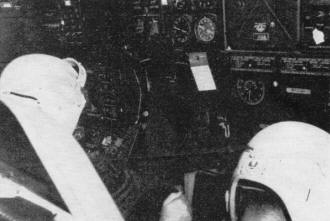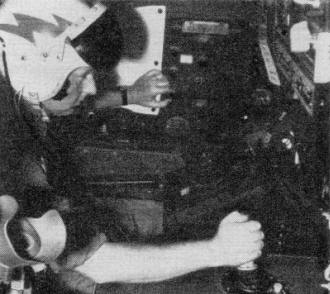B-52 Bomber Navigation System |
|||
The Boeing B-52 Stratofortress long-range bomber has been in continuous service since 1954. Production of new aircraft ran from 1952 through 1962. Now 67 years hence at version 'H,' it is still our nation's primary long-range bomber. That is a great testimony to the aircraft's initial design and construction, but a sad testimony to our ability to design and build a complete replacement. The B-1 bomber was a dismal failure and the B-2 Stealth bomber is too expensive to build and maintain in large quantities. This story from a 1957 edition of Radio & Television News reports on the "K-System" computerized bombsight gear installed in early B-52s that used radar for targeting. According to the writer, nearly 1,000,000 American defense company workers at companies like Eastman Kodak, General Motors, General Mills (yes, the breakfast cereal people), Motorola, and roughly 3,000 others were employed directly or indirectly in the manufacturing effort. Today, the DoD would subcontract most of the production to China and other countries that would love to see our demise. B-52 Bomb Navigation System
First photos of system that pinpoints any spot on globe in any weather. Far cry from the relatively simple "bombsight" of early World War II is this later version of the "K-System" bombing-navigation controls in new USAF B-52 Stratofortress bombers. These are first operational views of a master control panel, just released 10 years after the system was initially developed and produced by Sperry Gyroscope for the still-formidable B-47 and B-36 squadrons of Strategic Air Command. First view here reveals, by a selector switch above navigator's helmet (top right) , the transpolar range capability of the bombers. The K-System automatically measures distance and time to target, computes ballistics of bomb's curve for existing altitude, temperature and crosswinds, permits final hairline adjustment via radar or optical sight, triggers bomb away at proper instant, then helps the navigator to guide the shortest way home. Originally designed, developed, and produced by Sperry Gyroscope, manufacture of this critical gear was rapidly dispersed through other plants of General Motors, National Cash Register, and IBM. Eastman Kodak, Western Electric, General Mills, Motorola, and Farrand were multiple prime or sub-system sources. Western Electric developed the radar. In all, about one million factory workers and technicians in 36 states, at 3050 companies large and small, have been directly engaged in this Air Force program to supply needed K-Systems. More than 70,000 individual parts make up the various computers and other elements of a single K-System for an individual aircraft - about as many parts as a modern automobile with power steering and automatic transmission. Each system contains complex circuitry for hundreds of pre-tested vacuum tubes, over 50 motors, and about 100 relays, with many sealed amplifiers for quick unit replacement while in the air. The original prototype cost of nearly a half-million dollars was reduced to less than half by manufacturing improvements in volume production. Nearly 900 major improvements for system efficiency through all production channels have been made in the last six years. Sperry is now "phasing out" its K-System activity, and turning to more advanced gear. Meantime, the Air Force has announced the later-model B-52's will replace the K-System with an improved "Brane" bombing system to be produced by IBM.
Posted May 31, 2021 |
|||


